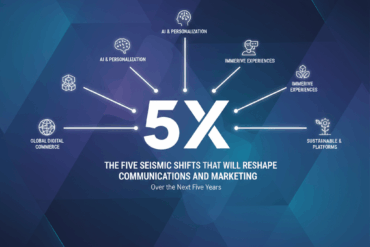By Yael Klass
I’ve seen marketers deliver pitch decks that read like they’ve been run through a meat grinder of SEO jargon, brand teams crafting tone-deaf social copy, and PR leads sending press releases that feel suspiciously like … they were born from a prompt.
We’re all guilty of it at some point. With the rise of generative AI (GenAI), especially tools like ChatGPT, it’s easy to fall into the trap of “good enough.”
But good storytelling is never just about stringing words together. It’s about resonance, rhythm and relevance. AI can support content creation, but only when you lead the narrative.
Here are the most common storytelling mistakes I see—and how to avoid them.
1. Mistaking Output For Insight
AI can generate sentences. Beautiful ones, even. But that doesn’t mean it understands why your story matters.
Great brand storytelling starts with human insight—something that touches on a tension, a truth or a transformation. If your copy sounds like it’s quoting a business textbook, it probably is.
Avoid it by: Starting with a core message before using AI. Prompt with purpose, not panic.
2. Forgetting The Brand Voice
Your brand is not vanilla. So why does your AI-generated content read like it was written for everyone and no one at the same time?
Avoid it by: Training your tools. Feed them your tone guidelines, values and actual examples of high-performing content. Don’t ask it to “write a blog post”; instead, ask it to “write a confident, witty LinkedIn post in the voice of a challenger brand targeting mid-market CMOs.”
3. Overusing The Same Clichés
Let me guess: You’re “redefining the future,” your product is “powered by innovation,” and your team is made up of “passionate experts.”
ChatGPT didn’t invent corporate clichés, but it sure has memorized a lot of them.
Avoid it by: Editing ruthlessly. Let AI give you a rough first draft, then cut, slash, rewrite and humanize. Swap tired phrases for honest ones.
4. Not Fact-Checking The Fiction
GenAI doesn’t know what’s true—it just knows what sounds true. In marketing, where credibility builds trust, that’s a huge risk.
I’ve seen press kits quoting articles that don’t exist and blog posts referencing outdated stats.
Avoid it by: Verifying every claim. If AI gives you a data point, source it. If it gives you a quote, Google it.
5. Losing The Narrative Arc
Stories need structure—a beginning, middle and end. Problem, tension, solution. Too often, AI-generated content jumps around like a caffeinated intern trying to impress every stakeholder at once.
The result? A muddled message that says a lot but lands nowhere.
Avoid it by: Mapping the arc before you write. What’s the hook? What pain point are you solving? Where’s the moment of clarity or transformation? Treat AI like a junior copywriter: It can help you fill in the blanks, but you still need to connect the dots.
6. Confusing Volume For Velocity
Yes, GenAI can crank out content at scale. But speed without strategy is just noise.
Churning out 20 mediocre LinkedIn posts might feel productive, but if they don’t reflect your brand’s POV or move your audience, what’s the point?
Avoid it by: Prioritizing clarity over quantity. Let AI handle the heavy lifting on first drafts, summaries or rewrites—but don’t publish without purpose. Focus on fewer, better pieces that align with your business goals.
A quick word of caution: While AI tools can dramatically speed up content creation, overusing them or using them poorly can backfire. Unoriginal, low-quality or overly “spammy” AI-generated content may trigger search engine penalties and hurt your chances of syndication or being invited to contribute elsewhere. When in doubt, quality and originality should always win out.
7. Skipping The Human Gut Check
AI doesn’t know your audience like you do. It can’t sense when something feels “off” or too slick or just … meh. That emotional intelligence? Still 100% human.
Avoid it by: Reading everything out loud and sharing drafts with real people. Ask yourself, “Would I read this? Would I believe this?” If it doesn’t move you, it won’t move anyone else, either.
Final Thoughts: Be The Pilot, Not The Passenger
ChatGPT is an incredible tool, but it’s not your brand’s voice, your company’s conscience or your customer’s confidence. That’s your job. Use AI to improve your craft, not replace it.
The best storytellers will use this technology to go faster but never shallower.
So the next time someone shrugs off flat messaging with a casual “ChatGPT made me do it,” remind them: AI might be your assistant, but it’s not your alibi.
Feature Image Credit: Getty
By Yael Klass
Yael Klass is the Vice President of Corporate Marketing at Similarweb. Read Yael Klass’ full executive profile here. Find Yael Klass on LinkedIn. Visit Yael’s website.


